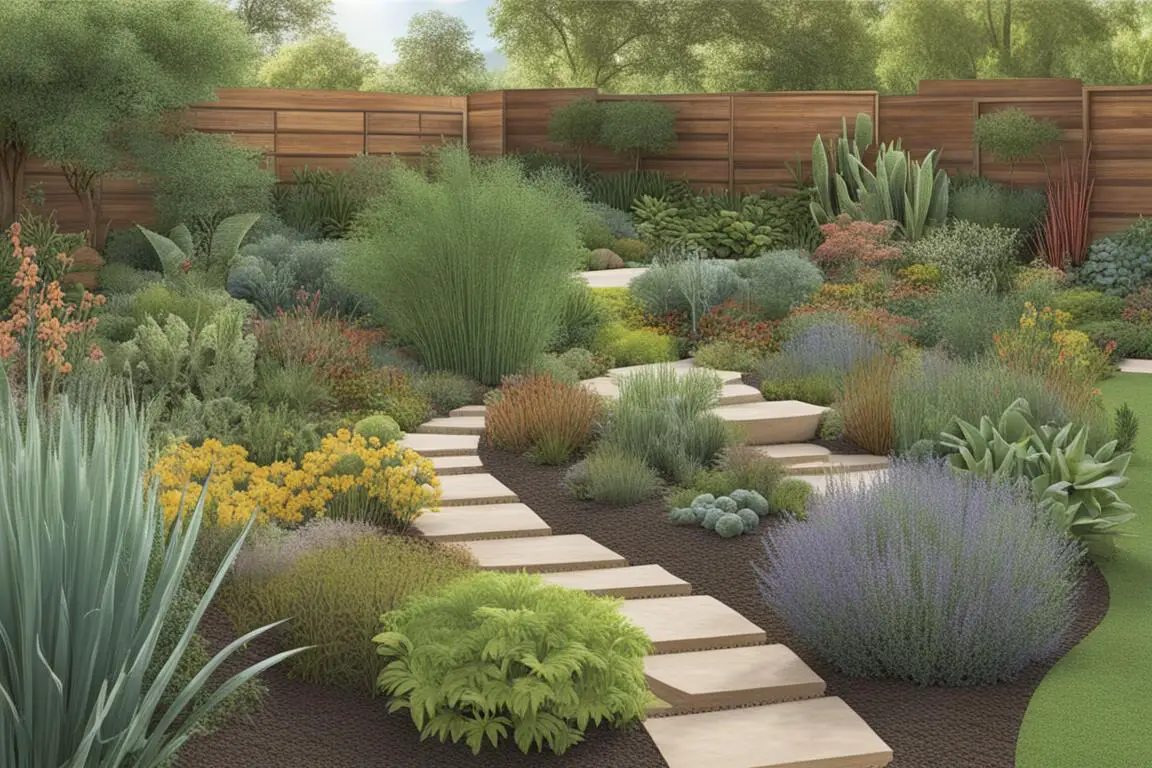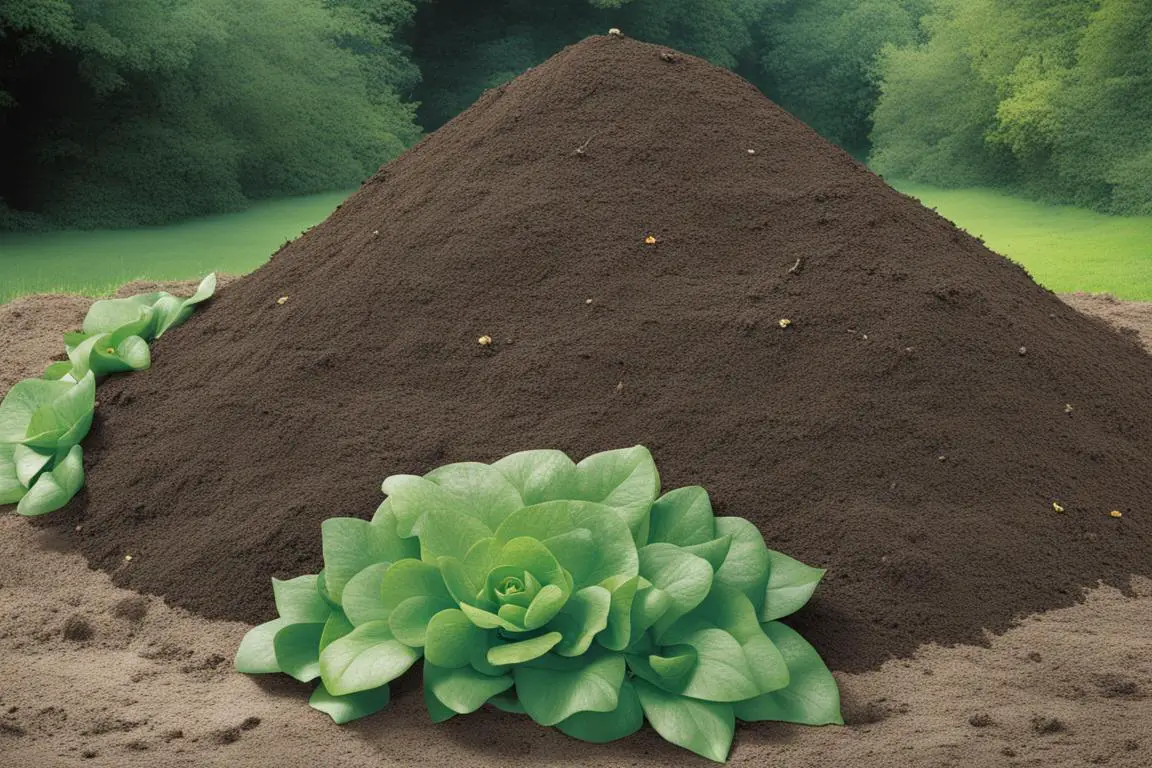In the verdant realm of gardening, sustainability isn’t just a buzzword; it’s a covenant with Earth, a horticultural harmony that resonates with the rhythms of nature. As a seasoned garden whisperer and a stalwart advocate for ecological balance, I’ve come to understand that crafting a sustainable and eco-friendly garden isn’t merely about planting seeds it’s about sowing a legacy that flourishes with life.
The tips I’m about to share aren’t your run-of-the-mill gardening hacks. They are tenets etched from years of soiling hands, a communion with nature, and a commitment to a greener future that I’ve lived and breathed. I invite you to join me on this journey of transformation, where each plot of land becomes a testament to sustainability.
10 Tips for Creating an Eco-Friendly Garden
In this article, you will learn:
– The importance of choosing native plants.
– How planting a tree can benefit your garden and the environment.
– Tips for using water wisely and reducing your lawn.
Eco-Friendly Garden Design
Choose Native Plants

When I first dug my fingers into the world of sustainable gardening, the allure of exotic plants was tempting. But experience has taught me that native plants are the unsung heroes. They are perfectly adapted to their local environment, requiring less water, fewer nutrients, and minimal care.
Embracing native plants means supporting local ecosystems and providing a haven for native wildlife. Studies have shown that native plant species support significantly more local bird, bee, and butterfly populations than their non-native counterparts. Take, for example, the case of the Monarch butterfly, whose populations have rebounded in areas where native milkweed has been reintroduced.
Insider Tip: Visit local nurseries or botanical gardens to discover plants that are indigenous to your region. They often offer species that are hard to find elsewhere.
Real-Life Example: Making the Switch to Native Plants
I still remember the frustration I felt when my non-native plants struggled to thrive in my garden. After doing some research, I decided to make the switch to native plants. I replaced my struggling azaleas with beautiful Eastern Columbines and swapped out my non-native grass with a lush patch of Little Bluestem. Not only did these native plants require less water and maintenance, but they also attracted a variety of local butterflies and birds to my garden. This simple change not only made my garden more eco-friendly, but it also brought me so much joy to see the local wildlife thriving in my own backyard.
Plant a Tree
Trees are the cornerstone of any eco-friendly garden. They sequester carbon, provide shade, and create microhabitats for a variety of species. A mature oak tree can absorb around 48 pounds of carbon dioxide per year and can also provide a habitat for hundreds of organisms.
When I planted my first sapling, I didn’t just plant a tree; I planted a promise a promise to the future. Choose a tree that will thrive in your local climate and soil conditions, and you’ll have made a significant stride towards a sustainable garden.
Create a Wildlife Habitat
Creating a wildlife habitat in your garden is akin to painting a living masterpiece. The buzz of bees, the flutter of butterflies, and the chirping of birds add an unmatched vibrancy. Natural habitats are diminishing, but your garden can serve as a sanctuary. Incorporate diverse plant life, provide water sources, and leave some areas wild to encourage visitors.
Insider Tip: Obtain a certification for your wildlife habitat through programs like the National Wildlife Federation’s Garden for Wildlife. It’s a rewarding way to document your contribution to biodiversity.
Use Water Wisely
Water is the lifeblood of the garden, but it is also a finite resource. Sustainable gardening means using water judiciously. Rain barrels can capture runoff, drip irrigation can reduce waste, and choosing drought-resistant plants can minimize the need for watering.
A study by the Environmental Protection Agency (EPA) suggests that utilizing rainwater can save up to 1,300 gallons of water during the peak summer months.
Tools & Equipment
The right tools can make or break a gardener’s spirit. Opt for hand tools made from sustainable materials like bamboo or recycled metal. Embrace solar-powered equipment to reduce carbon emissions. And always remember, the most sustainable tools are the ones that last, so invest in quality and maintain them well.
Compost Kitchen and Garden Waste

My compost pile is my garden’s gold mine. By composting kitchen scraps and garden waste, I’ve reduced landfill contributions and created a nutrient-rich soil amendment that plants love. Composting not only recycles nutrients but also fosters beneficial microbial activity in the soil, which is essential for plant health.
Insider Tip: Coffee grounds, eggshells, and banana peels make excellent additions to your compost pile.
Use Organic Fertilizers and Pest Control
Ditch the synthetic chemicals. Organic fertilizers and pest control nurture your garden without the environmental toll. For instance, neem oil is an effective organic pesticide that’s safe for beneficial insects. Plus, organic fertilizers release nutrients slowly, improving soil structure and health over time.
Soil Health & Fertility
Healthy soil is the foundation of a sustainable garden. It’s a complex ecosystem teeming with life, from earthworms to microbes. Enhance soil fertility by incorporating organic matter regularly, rotating crops, and using cover crops to prevent erosion and nutrient loss.
Mulch
Mulching is like tucking your plants in with a blanket of protection. It conserves moisture, suppresses weeds, and breaks down into organic matter, enriching the soil. Mulch with locally sourced materials, such as shredded leaves or straw, to keep your garden’s ecological footprint low.
Use Permeable Paving
Permeable paving allows water to infiltrate the ground, reducing runoff and preventing erosion. It can be made from various materials, including gravel, pervious concrete, or interlocking pavers. By using permeable surfaces, my garden paths have become a functional part of my garden’s ecosystem.
Permaculture Principles
Permaculture is the compass by which I navigate my gardening endeavors. It’s a design philosophy that mimics the patterns of natural ecosystems. By observing and replicating nature’s strategies, I’ve created a garden that is both productive and self-sustaining.
Reduce Your Lawn
The traditional lawn is an ecological desert. I’ve witnessed the transformation that occurs when lawns are converted into gardens. By reducing your lawn area, you conserve water, reduce chemical inputs, and create habitat for a plethora of life. A study by NASA estimated that lawns in the United States cover an area three times larger than any irrigated crop. Imagine the impact of converting even a fraction of that to sustainable gardens.
Use Sustainable Materials
When building garden structures, choose materials that have a low environmental impact. Reclaimed wood, bamboo, and recycled plastic are excellent choices. These materials not only reduce the demand for virgin resources but also add character and a story to your garden.
Homegrown Produce Preservation
The fruits of your labor should not go to waste. Learning to preserve your produce through methods like canning, drying, and fermenting can extend the bounty of your garden well into the winter months. Not only does this reduce food waste, but it also diminishes your reliance on store-bought goods with a heavy carbon footprint.
Insider Tip: Fermentation is an ancient preservation technique that also enhances the nutritional value of your produce.
In Conclusion
Sustainable gardening is an odyssey, a continuous journey of learning and growth. It’s not just about the harvestit’s about the harmony we create with our environment. These ten tips are stepping stones on a path that leads to a greener, more vibrant world, one garden at a time.
For those who yearn to delve deeper, additional resources await. Books like “Gaia’s Garden” by Toby Hemenway and websites such as the Permaculture Research Institute offer oceans of knowledge for the thirsty gardener.
As we part ways, I leave you with this call to action: let your garden be a canvas on which you paint a greener future. Let each seed you plant be a vote for sustainability, and let your garden’s whisper become the Earth’s roar.
FAQ
Who can help me design a sustainable garden?
A professional landscaper can assist in creating a sustainable garden.
What are some eco-friendly gardening practices?
Using compost, collecting rainwater, and planting native species.
How can I reduce water usage in my garden?
Installing drip irrigation and using water-efficient plants can help.
What if I have limited space for a garden?
Container gardening and vertical gardening are great options.
How can I make my garden more wildlife-friendly?
Including bird feeders, bee-friendly flowers, and a small pond.
What if I don’t have time to maintain a garden?
Low-maintenance plants and mulching can minimize upkeep.
